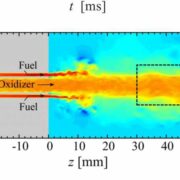Quantum Computing a Game Changer For Subatomic Physics

When two heavy ions collide inside a accelerator , they produce a near-perfect fluid through which an assortment of fundamental particles swim. For scientists to accurately simulate even a small drop of this hot and dense subatomic brew with a classical computer, it might take longer than the age of the universe but with the help of advanced quantum computing it is possible considerably .
A collaboration of theorists, experimentalists and computer scientists are exploring how they might crack the mathematics with the assistance of a strong and emerging tool: quantum computing.
“It’s time for us to start out brooding about how we will enjoy advances in quantum hardware,” says James Mulligan, a postdoc at the US Department of Energy’s Lawrence Berkeley National Laboratory performing on the ALICE Experiment.
Today, physicists use clusters of high-powered classical computers to crunch numbers and generate simulations of the subatomic world. Classical computers reduce complex information into combinations of ones and zeros called bits. A computer’s hardware processes and encodes these bits by releasing tiny bursts of electrons (for example, a 1 might be represented by a charge and a zero with no charge). From these simple building blocks, computers can perform incredibly complex calculations, but they require an enormous amount of your time and resources.
A quantum computer takes this principle of classical computing and adds a thick layer of nuance. Quantum computing swaps the deterministic property of “charge vs. no charge” for a quantum property like an electron’s spin. Spin is an intrinsic characteristic that—when measured—will settle into one among two possible states: ‘spin-up’ or ‘spin-down.’ But because it’s a quantum property, until a measurement is formed , the electron’s spin may be a superposition of both possibilities.
Each qubit—that is, the quantum equivalent of a bit—behaves sort of a microscopic probability spinner which will be tuned and controlled by the computer’s programming. The tuning (which is represented by a posh number) replaces the binary ‘one or zero’ notation of classical bits.
This switcheroo from binary to non-binary dramatically increases a quantum computer’s ability to perform multifaceted calculations.
While quantum computers carry little advantage for easy tasks like typing text messages or streaming videos, the implications surely sorts of complex calculations are enormous.
Today’s quantum computers are still in their infancy and lack the intricacy and reliability of classical computers. But Mulligan, Yao and Ringer want to be ready when the technology matures.
Recently, they performed a proof-of-principle study—with funding from DOE’s Office of Science and Berkeley Lab—that examined how the properties of an important particle might be impacted after it traversed through a quark-gluon plasma. Quark gluon plasmas are the most well liked and densest known state of matter and produced during heavy ion collisions, like those inside the Relativists Heavy Ion Collider at the DOE’s Brookhaven National Laboratory and therefore the Large Hadron Collider at CERN. The team of scientists ran their simulation on both a true quantum computer built by IBM and on a classical computer configured to imitate a quantum computer.
After several months of honing their code and testing the outcomes, they were ready to demonstrate that these sorts of calculations are already feasible on today’s quantum computers.

























